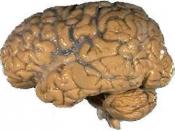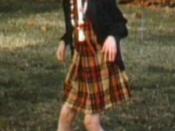The child "Genie", as she came to be known, was rescued in 1970 from abusive parents who had locked her up in her barren room and tied her to a potty chair for over a decade. She had not learned to talk and had been denied normal human reaction. When she was found, she was 13 years old but had the appearance of a child much younger. From the day she was found, the effects of her imprisonment were apparent, but they would also reach far into the future- affecting her growth in the stages of human development. The scientists who studied and helped her would also be faced with a dilemma - whether they should work in her best interest or for the progress of science.
Because of the extreme circumstances of her isolation, Genie was robbed of normal human interaction and experiences, which are important for the development of a healthy human being.
This may have first been missed in Genie's critical period - defined as "an optimal period shortly after birth when certain events must take place to facilitate proper development". Without human interaction, Genie's concept of morality wmay have been nonexistent. Genie developed physically. When she was found, she was 59 pounds and 54 inches tall. As soon as she was placed in the hospital and then a caring home, Genie began to grow and gain weight rapidly as if to make up for lost time. She also began to make gains in motor development, learning to become more physically coordinated and improving on her former strange way of walking. Genie also began to make gains in her cognitive development. Genie was able to make huge strides in intellect, being able to assimilate new experiences to memory. She also made developed her...


